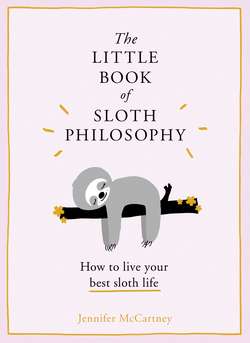Читать книгу The Little Book of Sloth Philosophy - Jennifer McCartney - Страница 11
Famous Followers of the Sloth Philosophy
ОглавлениеThe sloth philosophy has its own heroes – men and women who get up late, procrastinate, take lots of breaks and (surprise) manage to get stuff done in their own time. Because of their fame and success, you may not associate them with a sloth lifestyle. But rest assured, if you rest first, you’ll probably get around to it eventually – just like the winners you’ll read about here.
DOUGLAS ADAMS
Douglas Adams came up with the idea for the title of The Hitchhiker’s Guide to the Galaxy while lying drunk in a field – not the first time being drunk or taking a nap has paid off, so let this be a lesson to us all. He was also notoriously bad with deadlines, saying, ‘I love deadlines. I love the whooshing noise they make as they go by.’ The author’s book editor reportedly once spent three weeks locked in a hotel room with him to ensure he wrote and delivered the manuscript for So Long, and Thanks for All the Fish. He even recalls doing very little work at university – com-pleting three essays in as many years. He graduated nonetheless, and went on to become one of England’s most successful and best-known authors – all at his own pace.
LEONARDO DA VINCI
Guess how long it took famous sloth-philosophy hero da Vinci to finish the Mona Lisa? (Keep in mind the painting is only 21 by 30 inches.) A year? Three years? Scholars think it could have taken as many as fifteen. For the purposes of comparison, keener Michelangelo took just four years to paint the entire Sistine Chapel. Today, few of us care how long it took anyone from history to do anything – all that matters is that eventually, when they felt like it, they did it. Da Vinci also took 25 years to complete a seven-month commission – his first payment for Virgin of the Rocks being received in 1483 and the final one in 1508. And what was he doing with all that downtime? Doodling. Inventing the helicopter and the parachute and the tank.
LORD MELBOURNE
Lord Melbourne was by all accounts an unexceptional English prime minister. He didn’t oversee any wars or enact any notable policies. He’s mostly remembered for his extramarital affairs while in office and for his close relationship with Queen Victoria. Doing nothing was his default position. ‘Why not leave it alone?’ was his mantra (along with the words ‘delay’ and ‘postpone’). He was a man who served in his job adequately – we can all aspire to that.
FRANK LLOYD WRIGHT
In a situation that may be familiar to any sloth-philosophy adherent (and one that will strike fear into those conditioned to believe everything should always be done well in advance with months of preparation), witness Frank Lloyd Wright’s last-minute scramble to show he’d been working on a commission he’d actually ignored. According to his apprentices, Wright received an unexpected call from his patron, Edgar Kaufmann Sr, who mentioned he was in the neighbourhood and wanted to stop by to see the plans for his new house, Fallingwater. Wright had told the businessman that he’d been working on it when he’d done absolutely nothing since their original meeting nine months earlier. In the two hours it took Kaufmann to drive to see Wright, the architect quickly drew up plans for the now world-famous design. A lesson to all of us that what looks like laziness is often just the most efficient way of doing things. Why spend nine months working on something that can be done in two hours?
EDITH WHARTON
The famous American author of House of Mirth liked to write in bed. (Perhaps if we all had an estate in Massachusetts, we might be inclined to do the same.) Her friend Gaillard Lapsley described a typical day for the author: ‘She would have her writing board perilously furnished with an ink-pot on her knee, the dog of the moment under her left elbow and the bed strewn with correspondence, newspapers and books.’ Dogs, books and a bed. Sounds perfectly reasonable, doesn’t it? No grey cubicles or fancy desk chairs needed to get proper work done. In fact, the Edith Wharton Restoration organisation has restored the author’s luxury bedroom suite (bedroom, boudoir and bath) where she wrote, so you can go see for yourself and be inspired.
COLETTE
Colette was in her thirties and felt like a failure, her writing career not yet having taken off. (In a world of over-achieving 17-year-olds it was only too easy to feel like you’d aged out and missed your chance at fame.) Nevertheless, she persisted, with the help of a very strict writing routine: Colette would only begin to write after she’d groomed her French bulldog. Sounds reasonable.
‘To write is the joy and the torment of the idle,’ she said.
